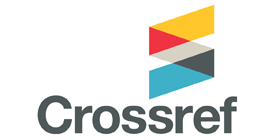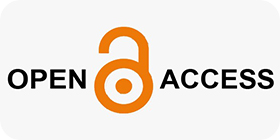The Impact of Synchronous, Asynchronous, and Hybrid Learning Models on the Self-Determined Motivation of EFL Learners: Investigating Learner Perceptions
Keywords:
Asynchronous, Hybrid Learning Models, Learner's perceptions, Self-determined motivation, Synchronous learningAbstract
Purpose: This study aimed to investigate the impact of synchronous, asynchronous, and hybrid learning models on the self-determined motivation of English as a Foreign Language (EFL) learners.
Methods and Materials: The research employed an explanatory mixed-method design using a quasi-experimental pretest-posttest approach. Four intact classes from Simaye Danesh Language Institute in Tehran were assigned to one control and three experimental groups representing different learning models. The Self-Determination Motivation Scale, measuring autonomy, competence, and relatedness on a 5-point Likert scale, was used for quantitative data collection. Additionally, semi-structured interviews were conducted with 25 participants from the experimental groups for qualitative insights. Data were collected over half an academic year, with a pre-test at the beginning and a post-test at the end. Quantitative data were analyzed using ANOVA, and qualitative data were thematically analyzed.
Findings: The results showed that the hybrid learning model yielded the highest post-test motivation scores among EFL learners, followed by the synchronous model, while the asynchronous model had the lowest scores among the experimental groups, though still higher than the traditional model. Qualitative analysis revealed three main themes contributing to improved motivation: increased engagement, flexibility in learning, and enhanced self-discipline.
Conclusion: The hybrid learning model proved to be the most effective in enhancing self-determined motivation in EFL learners by offering a balanced combination of real-time interaction and flexible self-paced learning.
Downloads
References
AbdAlgane, M., & Ali, R. (2024). Strategies for E-learning in Teaching English as a Foreign Language: Digital Pathways. Cambridge Scholars Publishing. https://www.cambridgescholars.com/product/978-1-0364-0095-8
Akram, H., & Li, S. (2024). Understanding the role of teacher-student relationships in students' online learning engagement: Mediating role of academic motivation. Perceptual and Motor Skills. https://doi.org/10.1177/00315125241248709
Ali, A. A., & et al. (2024). Addressing the Challenge of Hybrid Learning Environment in Foreign Language Education: Training Lecturers for Blended Teaching Approaches. Theory and Practice in Language Studies, 14(5), 1582-1594. https://doi.org/10.17507/tpls.1405.32
Anderson, T. (2008). The theory and practice of online learning. Athabasca University Press. https://doi.org/10.15215/aupress/9781897425084.01
Askarovich, R. K. (2024). OPTIMIZING ONLINE LEARNING MODELS: ENHANCING ENGAGEMENT AND LEARNING OUTCOMES. Web of Teachers: Inderscience Research, 2(10), 193-206. https://webofjournals.com/index.php/1/article/view/1989
Chen, P. D., Lambert, A. D., & Guidry, K. R. (2010). Engaging online learners: The impact of Web-based learning technology on college student engagement. Computers & Education, 54(4), 1222-1232. https://doi.org/10.1016/j.compedu.2009.11.008
Deci, E. L., & Ryan, R. M. (1985). Intrinsic motivation and self-determination in human behaviour. Springer. https://doi.org/10.1007/978-1-4899-2271-7
Deci, E. L., & Ryan, R. M. (2000). The "what" and "why" of goal pursuits: Human needs and the self-determination of behaviour. Psychological Inquiry, 11(4), 227-268. https://doi.org/10.1207/S15327965PLI1104_01
Dörnyei, Z. (2005). The psychology of the language learner: Individual differences in second language acquisition. Lawrence Erlbaum Associates. https://psycnet.apa.org/record/2005-08715-000
Dziuban, C., & Hartman, J. A. U. M. P. (2004). Blended learning. EDUCAUSE Center for Applied Research Bulletin, 7(1), 12. https://www.researchgate.net/publication/23966257
Faramarzi Babadi, S., Eskandari Asl, H. A., Dolatyari, F., & Alipoor, H. (2024). Limitations of English Language Learning in Universities of Chaharmahal and Bakhtiari Province and Strategies to Overcome Them [Research Article]. Iranian Journal of Educational Sociology, 7(1), 124-132. https://doi.org/10.61838/kman.ijes.7.1.12
Garrison, D. R., Anderson, T., & Archer, W. (2000). Critical inquiry in a text-based environment: Computer conferencing in higher education. The Internet and Higher Education, 2(2-3), 87-105. https://doi.org/10.1016/S1096-7516(00)00016-6
Garrison, D. R., & Kanuka, H. (2004). Blended learning: Uncovering its transformative potential in higher education. The Internet and Higher Education, 7(2), 95-105. https://doi.org/10.1016/j.iheduc.2004.02.001
Graham, C. R. (2006). Blended learning systems: Definition, current trends, and future directions. In C. J. Bonk & C. R. Graham (Eds.), The handbook of blended learning: Global perspectives, local designs (pp. 3-21). Pfeiffer. https://www.researchgate.net/publication/258834966
Hrastinski, S. (2008). Asynchronous and synchronous e-learning. EDUCAUSE Quarterly, 31(4), 51-55. https://er.educause.edu/articles/2008/11/asynchronous-and-synchronous-elearning
Li, L., Hew, K. F., & Du, J. (2024). Gamification enhances student intrinsic motivation, perceptions of autonomy and relatedness, but minimal impact on competency: a meta-analysis and systematic review. Educational Technology Research and Development, 72(2), 765-796. https://doi.org/10.1007/s11423-023-10337-7
Lim, D. H., Morris, M. L., & Kupritz, V. W. (2007). Online vs. blended learning: Differences in instructional outcomes and learner satisfaction. Journal of asynchronous learning networks, 11(2), 27-42. https://doi.org/10.24059/olj.v11i2.1725
Lim, J., & Lee, M. (2024). The buffering effects of using avatars in synchronous video conference-based online learning on students' concerns about interaction and negative emotions. Education and Information Technologies, 1-24. https://doi.org/10.1007/s10639-024-12508-2
Lo, N. P.-K. (2024). Cross-cultural comparative analysis of student motivation and autonomy in learning: perspectives from Hong Kong and the United Kingdom. Frontiers in Education, 9. https://doi.org/10.3389/feduc.2024.1393968
Martin, F., Parker, M. A., & Deale, D. F. (2012). Examining interactivity in synchronous virtual classrooms. International Review of Research in Open and Distance Learning, 13(3), 227-261. https://doi.org/10.19173/irrodl.v13i3.1174
Najafi, T., Razmjoo, S. A., & Sahragard, R. (2024). Achievement Goal Orientations of Iranian EFL Teachers in Postmethod Pedagogy Expertise. iase-idje, 7(2), 26-35. https://doi.org/10.61838/kman.ijes.7.2.4
Pintrich, P. R. (2018). A motivational science perspective on the role of student motivation in learning and teaching contexts. Journal of Educational Psychology, 95(4), 667-686. https://doi.org/10.1037/0022-0663.95.4.667
Por Jafari shir Joposht, M., Shakibaei, Z., & Zarei, H. (2024). `Provide a Model for Parents' Educational Assistance to Empower Online Education in Critical Situations. Sociology of Education, 10(1), 31-44. https://doi.org/10.22034/ijes.2023.2006736.1434
Racheva, V., & Peytcheva-Forsyth, R. (2024). NAVIGATING THE FUTURE: EXPLORING SYNCHRONOUS HYBRID LEARNING IN HIGHER EDUCATION POST- COVID. INTED2024 Proceedings,
Ravshanov, M., & Xudoyberdiyev, B. (2024). TEACHING CHEMISTRY BASED ON DISTANCE EDUCATION TECHNOLOGIES (SYNCHRONOUS AND ASYNCHRONOUS TEACHING METHODS). Modern Science and Research, 3(6). https://inlibrary.uz/index.php/science-research/article/view/35196
Reeve, J. P. Self-determination theory applied to educational settings. In E. L. Deci & R. M. Ryan (Eds.), Handbook of self-determination research (pp. 183-203). University of Rochester Press. https://www.scirp.org/reference/referencespapers?referenceid=1875738
Suen, H.-Y., & Hung, K.-E. (2024). Enhancing learner affective engagement: The impact of instructor emotional expressions and vocal charisma in asynchronous video-based online learning. Education and Information Technologies, 1-28. https://doi.org/10.1007/s10639-024-12956-w
Ushioda, E. (2011). Language learning motivation, self and identity: Current theoretical perspectives. Bloomsbury Academic. https://doi.org/10.1080/09588221.2010.538701
Vaughan, N. (2007). Perspectives on blended learning in higher education. International Journal on E-Learning, 6(1), 81-94. https://www.learntechlib.org/primary/p/6310
Zimmerman, B. J. (2008). Investigating self-regulation and motivation: Historical background, methodological developments, and future prospects. American Educational Research Journal, 45(1), 166-183. https://doi.org/10.3102/0002831207312909
Downloads
Published
Submitted
Revised
Accepted
Issue
Section
License
Copyright (c) 2025 Akram Labbafi, Sorayya Behroozizad, Nahid Zarei (Author)

This work is licensed under a Creative Commons Attribution-NonCommercial 4.0 International License.
















